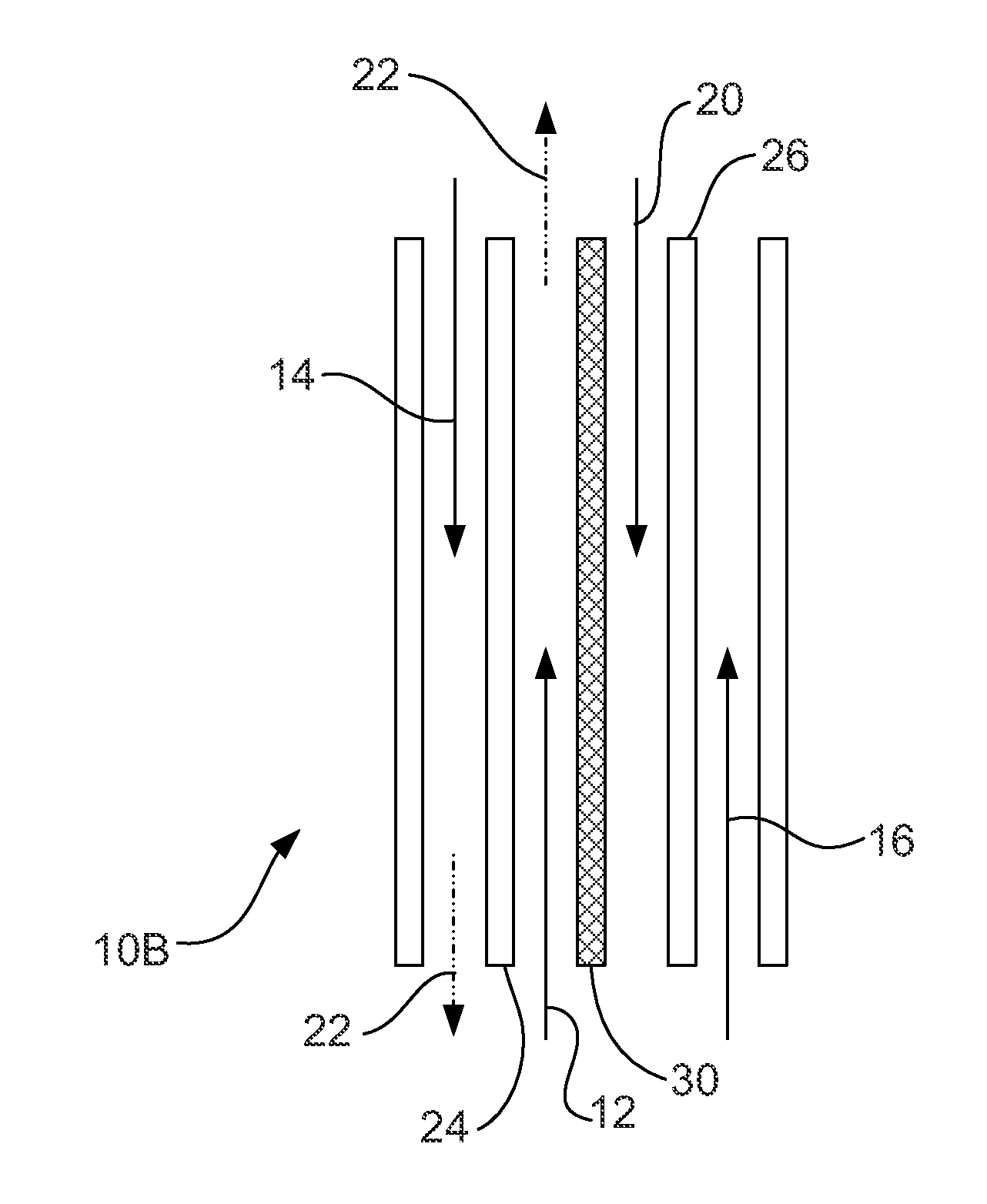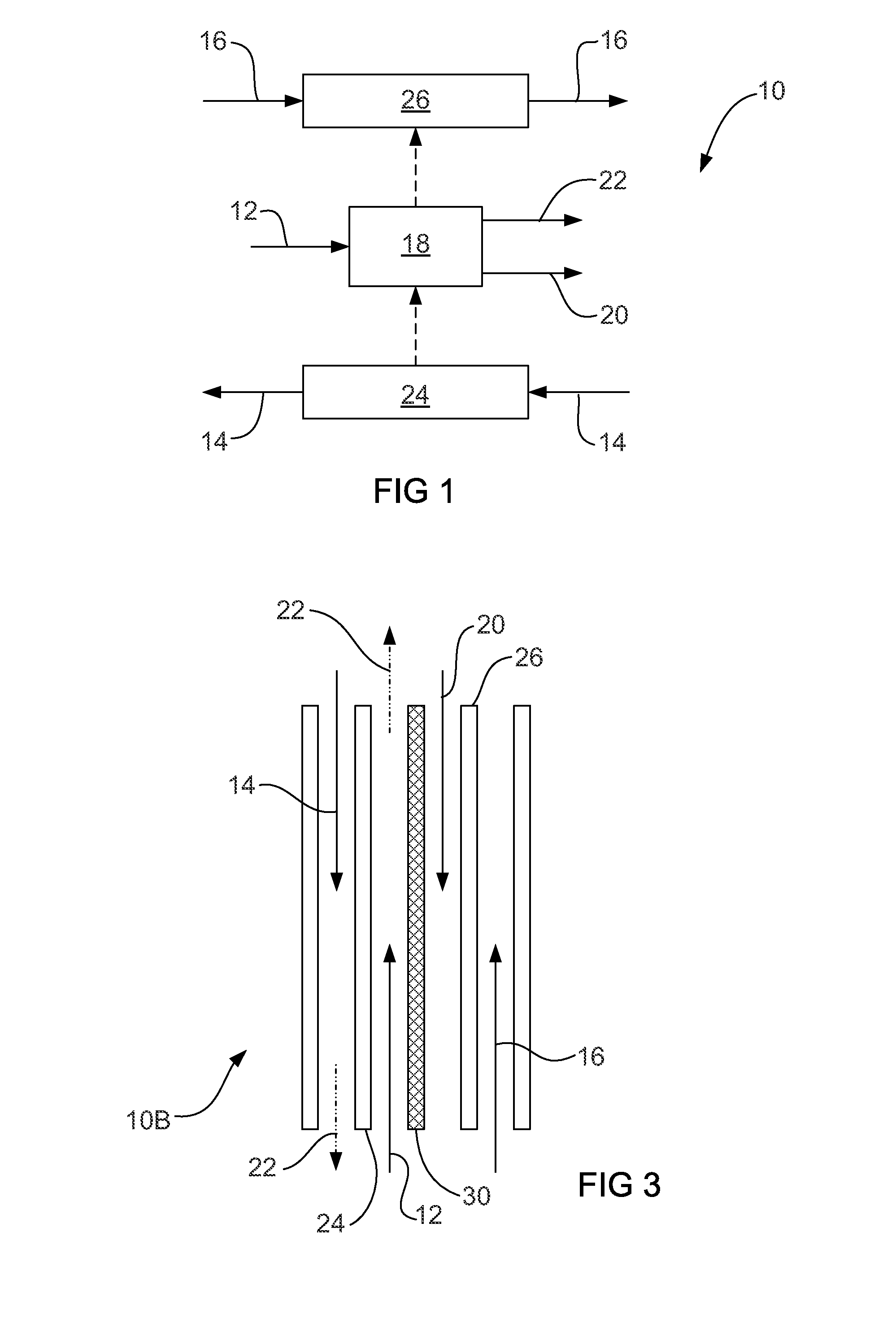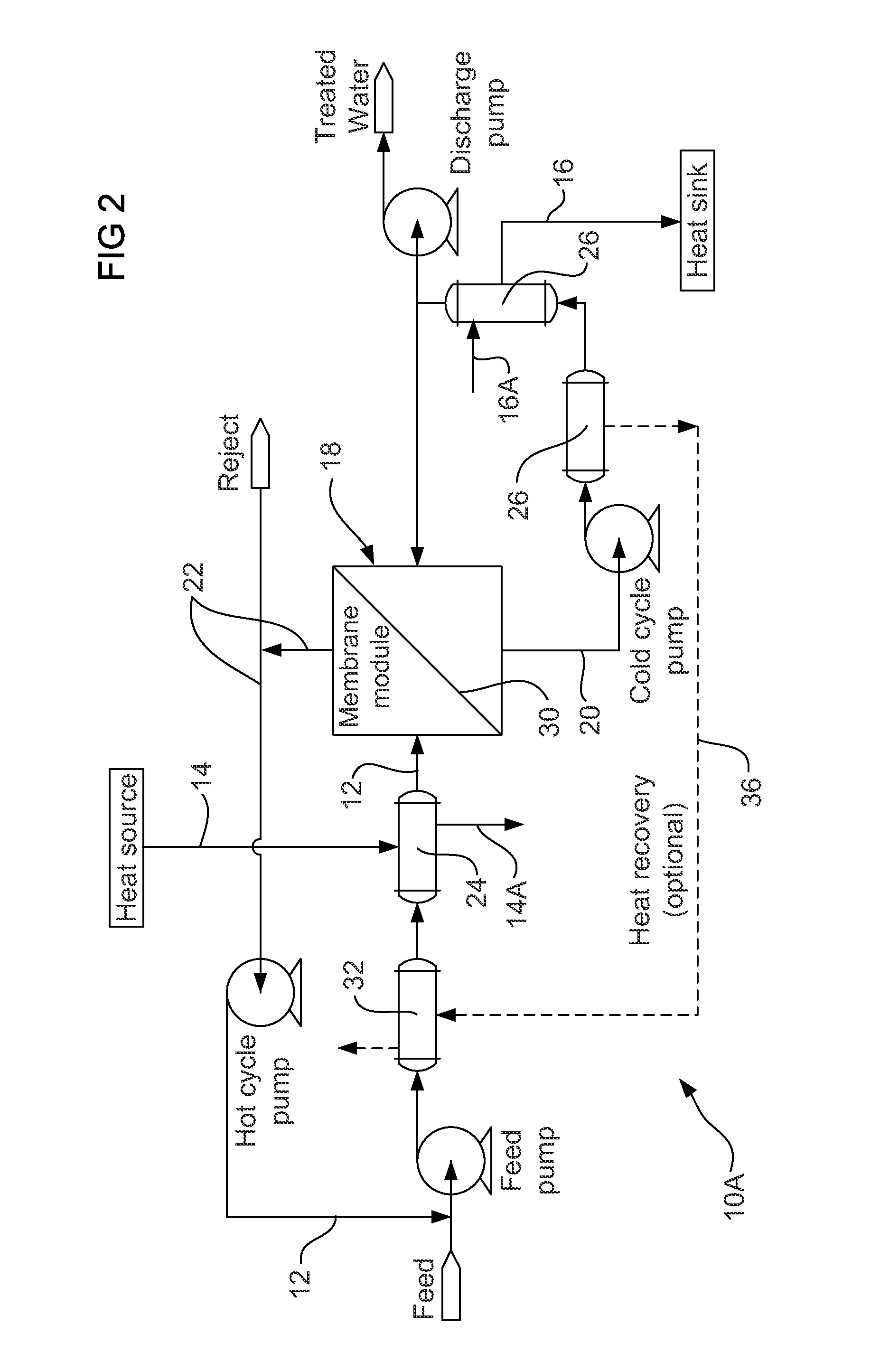Heat exchange system
- Summary
- Abstract
- Description
- Claims
- Application Information
AI Technical Summary
Benefits of technology
Problems solved by technology
Method used
Image
Examples
example 1
Dairy Process Integration
[0054]In a dairy process, whey is routinely cooled from 45° C. to around 30° C. by a heat exchanger coupled to the incoming milk stream which heats this stream up from 6° C. to about 27° C. In this example, the heat transferred is about 2300 kW.
[0055]The heat transferred in this operation can be passed through a MDHX system according to the present invention. Assuming an energy demand of Membrane Distillation (MD) of 100 kWh per m3 of water recovered, the dairy example transferring 2300 kW of heat translates to a water recovery capacity by a MDHX system according to the present invention of 23 m3 / hour. In the same plant, this treatment capacity is enough to treat all the water required for cleaning in place procedures. Alternatively, this energy could also be used for concentration purposes instead of or additionally to water recovery.
example 2
Bench Scale Results
[0056]A MDHX module prototype was constructed, and is illustrated in FIG. 4. The hot heat exchange (HE) ports (Hotin and Hotout) and feed membrane distillation (MD) ports (Feedin and Feedout) are indicated in FIG. 4. It should be appreciated that the cold heat exchange and membrane distillation permeate ports are located on a side of the module that is not visible in FIG. 4. There are a total of eight ports on this prototype MDHX.
[0057]An experiment was set up using the prototype MDHX shown in FIG. 4. In the experiment, the prototype MDHX was operated as a normal membrane distillation module, without the use of the heat exchange section and heat exchange ports. The same conditions were then used running the prototype MDHX with the heat exchange section operating. The flow rate fed to the MD feed and permeate sides were varied for both a normal MD and the MDHX setup.
[0058]FIG. 5 provides experimental data from a prototype MDHX module compared to conventional Membra...
example 3
Reduction in Electrical Energy Required
[0061]A conventional membrane distillation (MD) system shown in FIG. 6 was operated as a comparison to a membrane distillation heat exchange (HXMD) system according to the present invention shown in FIG. 7.
[0062]In operating the MD system shown in FIG. 6, raw solution to be treated by MD enters at ‘MD feed’100, then enters a warm recirculation loop 102 pumped by pump ‘P01’. The solution in the cycle 102 is heated by heat exchanger ‘HX01’ where heat energy is added via QEXTHX,in 104, in this case an external heat source, such as a heating coil. The solution then passes into the MD module 110 where some treated permeate is removed from the cycle 102 via the membrane 112 in a single pass after which it then exits the module 110. A portion of retentate is drawn from module exit stream 106 into a reject stream 108, while the remaining majority returns to the entrance of P01 via recycle stream 109. The permeate that was treated via the membrane is no...
PUM
| Property | Measurement | Unit |
|---|---|---|
| Area | aaaaa | aaaaa |
| Energy | aaaaa | aaaaa |
| Heat | aaaaa | aaaaa |
Abstract
Description
Claims
Application Information
 Login to View More
Login to View More - R&D
- Intellectual Property
- Life Sciences
- Materials
- Tech Scout
- Unparalleled Data Quality
- Higher Quality Content
- 60% Fewer Hallucinations
Browse by: Latest US Patents, China's latest patents, Technical Efficacy Thesaurus, Application Domain, Technology Topic, Popular Technical Reports.
© 2025 PatSnap. All rights reserved.Legal|Privacy policy|Modern Slavery Act Transparency Statement|Sitemap|About US| Contact US: help@patsnap.com



